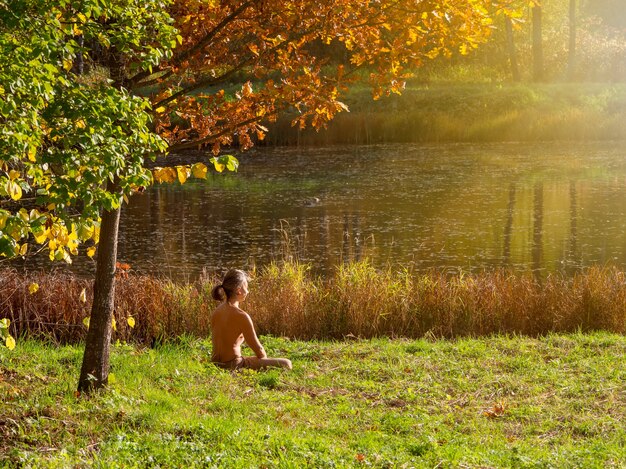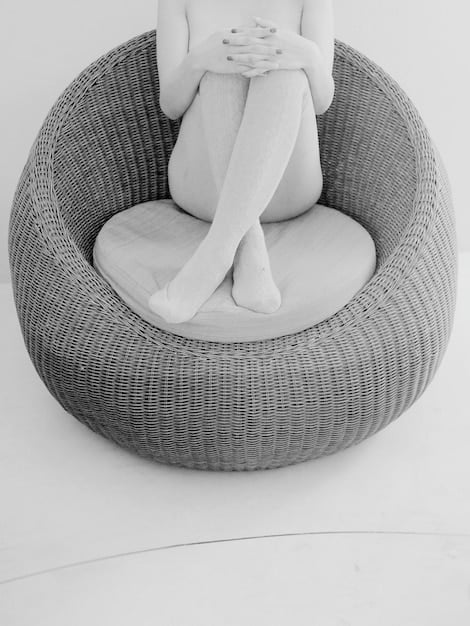Transform Your Life with a 30-Day Meditation Challenge in 2025

Transform Your Life: A 30-Day Meditation Challenge for Lasting Change in 2025 offers a structured approach to incorporating meditation into your daily routine, fostering lasting improvements in mental clarity, stress reduction, and overall well-being.
Embark on a transformative journey with the Transform Your Life: A 30-Day Meditation Challenge for Lasting Change in 2025. This challenge is designed to help you discover the power of meditation and its profound impact on your life.
Unveiling the Power of Meditation
Meditation has been practiced for centuries across various cultures, recognized for its ability to calm the mind and promote inner peace. In today’s fast-paced world, the benefits of meditation are more relevant than ever. Let’s explore what makes meditation so powerful.
The Science-Backed Benefits of Meditation
Studies have shown that regular meditation can lead to a decrease in stress hormones, improved focus, and enhanced emotional regulation. Understanding the science behind these benefits can motivate you to integrate meditation into your daily life.
Meditation for Mental Clarity
One of the key advantages of meditation is its ability to sharpen mental clarity. By quieting the mental chatter, meditation enables you to think more clearly and make better decisions.
- Reduces anxiety and stress.
- Enhances focus and concentration.
- Promotes emotional balance.
- Improves sleep quality.
Meditation is a tool that can significantly enhance your mental well-being.

In conclusion, the power of meditation lies in its ability to provide mental clarity and promote overall well-being.
Setting the Stage: Preparing for Your 30-Day Challenge
Before diving into the 30-day meditation challenge, it’s crucial to set the stage for success. This involves creating a conducive environment, setting realistic goals, and understanding the basic principles of meditation.
Creating a Peaceful Environment
Your surroundings can significantly impact your meditation experience. Find a quiet space where you can relax without distractions. This could be a dedicated room or a cozy corner in your home.
Setting Realistic Goals for Meditation
Start with short meditation sessions, such as 5-10 minutes a day, and gradually increase the duration as you become more comfortable. Setting achievable goals will help you stay consistent and avoid feeling overwhelmed.
- Choose a quiet and comfortable space.
- Set a specific time each day for meditation.
- Inform family members or roommates to avoid interruptions.
- Gather any necessary props, such as a cushion or blanket.
Proper preparation can make a significant difference in the effectiveness of your meditation practice.
In conclusion, preparing for your 30-day meditation challenge involves creating a peaceful environment and setting realistic goals, ensuring a more effective and enjoyable experience.
Week 1: Mindfulness and Breath Awareness
The first week of the 30-day challenge focuses on mindfulness and breath awareness. These foundational practices will help you become more present and grounded in your daily life. Let’s explore the techniques for this week.
Mindfulness Meditation Techniques
Mindfulness meditation involves paying attention to the present moment without judgment. This can include observing your thoughts, feelings, and sensations as they arise.
Breath Awareness Exercises
Breath awareness is a simple yet powerful technique that involves focusing on the sensation of your breath. This can help anchor you in the present moment and reduce mental wandering.
- Focus on the sensation of your breath entering and leaving your nostrils.
- Notice the rise and fall of your abdomen.
- Gently redirect your attention to your breath whenever your mind wanders.
- Practice for 10-15 minutes each day.
Mindfulness and breath awareness are essential tools for cultivating inner peace.
In conclusion, the first week of the meditation challenge emphasizes mindfulness and breath awareness, providing a solid foundation for further exploration of meditation techniques.
Week 2: Loving-Kindness Meditation
The second week introduces loving-kindness meditation, a practice that cultivates feelings of compassion and warmth towards yourself and others. This can enhance your relationships and overall sense of well-being. Let’s dive into the benefits of this week.
Cultivating Self-Compassion
Begin by directing feelings of loving-kindness towards yourself. This involves acknowledging your own struggles and offering yourself the same kindness and understanding you would offer a friend.
Extending Compassion to Others
Once you’ve cultivated self-compassion, extend these feelings to others, including loved ones, acquaintances, and even those you find challenging. This practice can help break down barriers and foster connection.

- Start by directing loving-kindness towards yourself.
- Extend these feelings to loved ones, acquaintances, and even those you find challenging.
- Use phrases such as “May I be happy, may I be healthy, may I be safe, may I live with ease.”
- Practice for 15-20 minutes each day.
Loving-kindness meditation is a powerful way to foster compassion and connection.
In conclusion, week two of the meditation challenge focuses on loving-kindness meditation, enhancing compassion and promoting positive relationships.
Week 3: Body Scan Meditation
Week three involves body scan meditation, a technique that brings awareness to different parts of your body, helping you identify and release tension. This can improve your body awareness and promote relaxation. Let’s explore the process.
Becoming Aware of Physical Sensations
Body scan meditation involves systematically scanning your body from head to toe, noticing any sensations you may be experiencing. This can include tingling, warmth, or tension.
Releasing Tension Through Awareness
As you become aware of tension in different parts of your body, gently encourage it to release. This can involve deep breathing, visualization, or simply acknowledging the sensation without judgment.
- Lie down in a comfortable position.
- Systematically scan your body from head to toe, noticing any sensations.
- Gently encourage any tension to release through deep breathing or visualization.
- Practice for 20-25 minutes each day.
Body scan meditation can enhance body awareness and promote relaxation.
In conclusion, the third week of the meditation challenge introduces body scan meditation, helping you become more aware of physical sensations and release tension.
Week 4: Integrating Meditation into Daily Life
The final week focuses on integrating meditation into your daily life. This involves finding ways to incorporate mindfulness into your routine and making meditation a sustainable habit. Let’s consider some strategies.
Mindful Moments Throughout the Day
Look for opportunities to practice mindfulness throughout the day, such as while eating, walking, or washing dishes. This can help you stay present and reduce stress in everyday situations.
Making Meditation a Sustainable Habit
To make meditation a sustainable habit, find a time and place that works for you and stick to it. This could involve meditating first thing in the morning, during your lunch break, or before bed.
- Look for opportunities to practice mindfulness throughout the day.
- Make meditation a sustainable habit by finding a time and place that works for you.
- Be patient with yourself and celebrate your progress.
- Connect with a meditation community for support and inspiration.
Integrating meditation into daily life can lead to lasting transformation.
In conclusion, week four of the meditation challenge focuses on integrating meditation into your daily life, making it a sustainable habit for long-term benefits.
| Key Point | Brief Description |
|---|---|
| 🧘♀️ Mindfulness Meditation | Focus on the present without judgment. |
| ❤️ Loving-Kindness | Cultivate compassion for self and others. |
| 😌 Body Scan | Release tension through body awareness. |
| 📅 Daily Integration | Incorporate meditation into your routine. |
Frequently Asked Questions
▼
Meditation is a practice that involves training your mind to focus and redirect thoughts. It typically works by focusing on a specific object, thought, or activity – such as the breath – to achieve a mentally clear and emotionally calm state.
▼
The duration of your meditation sessions can vary based on your experience and preferences. Beginners often start with 5-10 minutes, gradually increasing to 20-30 minutes as they become more comfortable and find deeper focus.
▼
It’s completely normal for your mind to wander during meditation. When you notice your thoughts drifting, gently acknowledge them without judgment and redirect your attention back to your chosen focus, such as your breath.
▼
Yes, numerous studies have shown that regular meditation can significantly reduce stress and anxiety. By promoting relaxation and mental clarity, meditation helps regulate the body’s stress response and improve overall emotional well-being.
▼
No, you don’t need any special equipment for meditation. All you need is a quiet space where you can sit or lie down comfortably. Some people find it helpful to use a cushion or blanket for added comfort, but these are optional.
Conclusion
Embarking on a Transform Your Life: A 30-Day Meditation Challenge for Lasting Change in 2025 can be a transformative experience. By incorporating mindfulness, compassion, and body awareness into your daily life, you can unlock your potential and cultivate lasting well-being.





